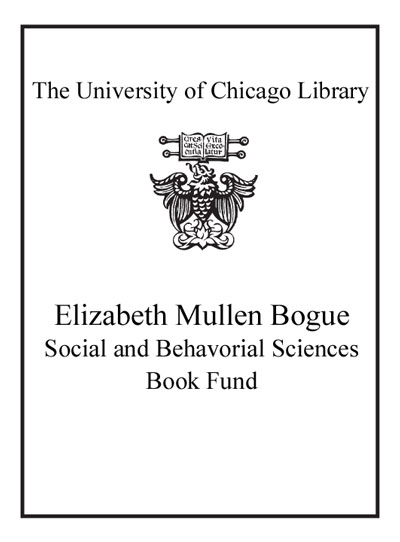The social life of forensic evidence /
Saved in:
| Author / Creator: | Kruse, Corinna, 1975- author. |
|---|---|
| Imprint: | Oakland, California : University of California Press, [2016] ©2016 |
| Description: | viii, 196 pages ; 24 cm |
| Language: | English |
| Subject: | |
| Format: | Print Book |
| URL for this record: | http://pi.lib.uchicago.edu/1001/cat/bib/10738776 |
MARC
| LEADER | 00000cam a2200000 i 4500 | ||
|---|---|---|---|
| 001 | 10738776 | ||
| 003 | ICU | ||
| 005 | 20160413043957.5 | ||
| 008 | 150817t20162016cau b 001 0 eng c | ||
| 010 | |a 2015031935 | ||
| 020 | |a 9780520288386 |q (cloth ; |q alk. paper) | ||
| 020 | |a 0520288386 |q (cloth ; |q alk. paper) | ||
| 020 | |a 9780520288393 |q (pbk. ; |q alk. paper) | ||
| 020 | |a 0520288394 |q (pbk. ; |q alk. paper) | ||
| 020 | |z 9780520963337 |q (ebook) | ||
| 020 | |z 0520963334 |q (ebook) | ||
| 035 | |a (OCoLC)919316264 | ||
| 040 | |a CU-S/DLC |b eng |e rda |c CUS |d DLC |d PUL |d BDX |d BTCTA |d YDXCP |d OCLCF |d CDX |d CTN |d OCLCQ | ||
| 042 | |a pcc | ||
| 050 | 0 | 0 | |a HV8073 |b .K688 2016 |
| 082 | 0 | 0 | |a 363.25 |2 23 |
| 100 | 1 | |a Kruse, Corinna, |d 1975- |e author. |0 http://id.loc.gov/authorities/names/no2015109893 |1 http://viaf.org/viaf/14752011 | |
| 245 | 1 | 4 | |a The social life of forensic evidence / |c Corinna Kruse. |
| 264 | 1 | |a Oakland, California : |b University of California Press, |c [2016] | |
| 264 | 4 | |c ©2016 | |
| 300 | |a viii, 196 pages ; |c 24 cm | ||
| 336 | |a text |b txt |2 rdacontent |0 http://id.loc.gov/vocabulary/contentTypes/txt | ||
| 337 | |a unmediated |b n |2 rdamedia |0 http://id.loc.gov/vocabulary/mediaTypes/n | ||
| 338 | |a volume |b nc |2 rdacarrier |0 http://id.loc.gov/vocabulary/carriers/nc | ||
| 504 | |a Includes bibliographical references (pages 179-189) and index. | ||
| 505 | 0 | |a In court : legal stories -- The public prosecution's office : leading investigations -- The criminal investigation division : people -- In the laboratory : quantification and organic objectivity -- The crime scene division : traces -- Colluding and colliding worlds : moving forensic evidence -- In court, reprise : legal truth -- Conclusion : the social life of forensic evidence. | |
| 520 | |a "In The Social Life of Forensic Evidence, Corinna Kruse provides a major contribution to understanding forensic evidence and its role in the criminal justice system. Kruse argues that forensic evidence can be understood as a form of knowledge, and as such, pieces of forensic evidence have social lives and biographies. She shows, for example, how the crime scene examination is as crucial in creating forensic evidence as the analyses done in the laboratory; the plaintiff, witness, and suspect statements elicited by police investigators; and the interpretations that prosecutors and defense lawyers bring to the evidence. Drawing on ethnographic data from Sweden and on theory from both anthropology and science and technology studies, Kruse examines how forensic evidence is produced and which social relationships it creates as cases move from crime scene to courtroom. She shows how forensic evidence is neither a fixed entity nor solely material but is inseparably part of and made through legal, social, and technological practices"--Provided by publisher. | ||
| 650 | 0 | |a Forensic sciences. |0 http://id.loc.gov/authorities/subjects/sh90001487 | |
| 650 | 0 | |a Criminal investigation. |0 http://id.loc.gov/authorities/subjects/sh85034045 | |
| 650 | 7 | |a Criminal investigation. |2 fast |0 (OCoLC)fst00883201 | |
| 650 | 7 | |a Forensic sciences. |2 fast |0 (OCoLC)fst00932011 | |
| 903 | |a HeVa | ||
| 929 | |a cat | ||
| 999 | f | f | |i 882fbc11-5bf4-5c9c-8205-5ad7f925057c |s 1dedcf0a-d7da-5f86-928d-49b5af23eb5c |
| 928 | |t Library of Congress classification |a HV8073.K688 2016 |l JRL |c JRL-Gen |i 8912720 | ||
| 927 | |t Library of Congress classification |a HV8073.K688 2016 |l JRL |c JRL-Gen |e BOGU |b 112661449 |i 9589483 | ||

